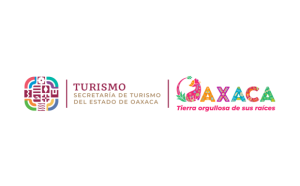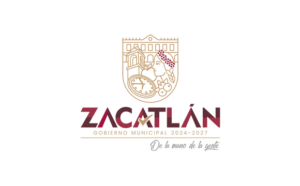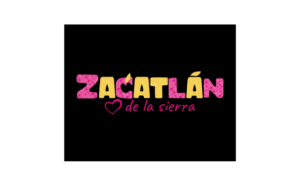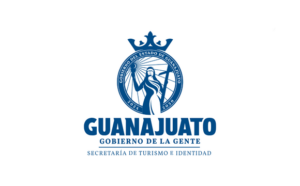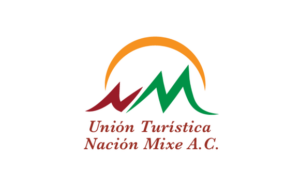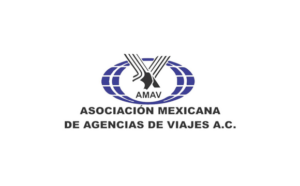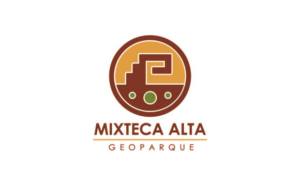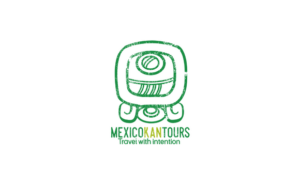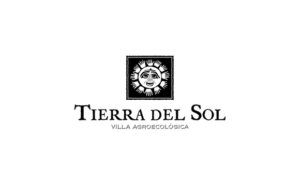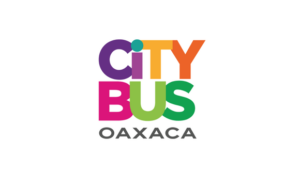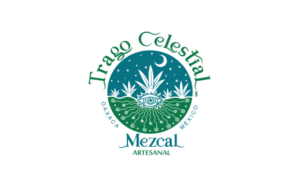This site is definitely unique in the whole world; however, such distinction seems irrelevant, for the local government and environmental ministers have approved the operation of hundreds of industrialized pig an poultry farms, that everyday pollute the underground aquifer irreversibly.Ilustración 4 Vista aérea granja porcina de Homún, en suspensión de actividades por principio precautorio. © Greenpeace

. Figure 1 Swine farms and National Protected areas and Ramsar Sites. © Greenpeace
The Ring of Cenotes Reserve is adjacent to Cuxtal County Ecological Reserve; it contains 24 karstic ecosystems and covers totally or partially 13 counties in Yucatan State. The Yalahau Lagoon Natural Protected Area, an endangered wildilfe refuge with four lagoons and over 200 cenotes is located inside the Ring of Cenotes Reserve.

Figure 2 Areas of the Cuxtal County Reserve, Ring of Cenotes State Reserve Yalahau Lagoon Natural Protected Area.
In 2013, the area was designated a State’s Natural Protected Area with the intention to distribute more equally the proceeds from its environmental services, mainly hydrogeologic, of the ecosystems located inside this area. The most common problem it endures is the uncontrolled extraction of underground water, aggravated by the deforestation, expansion of grasslands to feed cattle, uncontrolled agricultural fires, urban development in flooding areas, destruction of the mangrove and agrochemical runoffs and the untreated wastewater from industrial pig farms.
The swine industry is predominant in the State of Yucatan, and the wastewater discharges have been exponential to the accelerated growth of the swine population, complicating its treatment.
An analysis elaborated in 2016 by the City of Mérida Planning Institute, for the Vision 2040 Urban Development Program determined that only a handful of corporations monopolize the pork and poultry trade, and that none of their farms have neither wastewater treatment systems, nor adequate solid waste management; thus, creating a level of pollution impossible to revert.

Figure 3 Land aptitude for the development of Swine industry. © Bautista, Aguilar. AMEK
The preservation of this World Heritage site has been relayed to organized society and civil associations, who shielded by science fight to stop the massive farms from wrecking the area, tortured by the impassivity of the local decision makers and public environmental ministry officers.
The economic benefits for the four corporations owning most of the farms might outweigh the environmental setbacks of two dozen indigenous villages; but it is worth analyzing how the income from the farms is being redistributed in the affected locations, and how the corporations are mitigating the environmental impact of their farms; it is evident neither is being done.
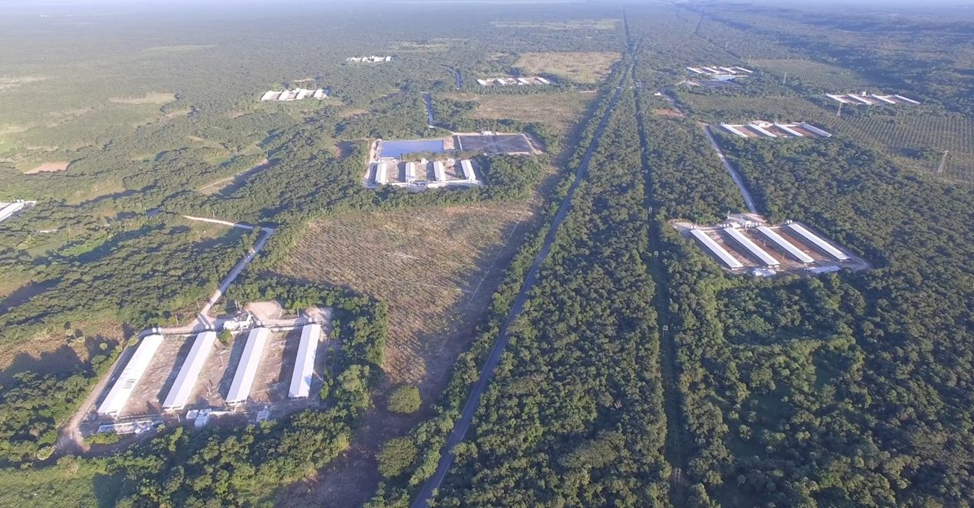
Figure 4 Aerial view of the suspended swine farm in Homún. © Greenpeace
In a trial that begun in 2016, the people from the Maya village of Homún, in Yucatán has been fighting to cancel the introduction of industrial swine farms in their territory, located inside the Ring of Cenotes Geohydrological Reserve. Although they have achieved the suspension of activities, it has only been at one of the more than 250 industrial farms that exist; and the removal or relocation of the many others still harming the aquifer has not been brought up to discussion yet.
Once the hydrogeological reserve starts to contaminate, the interconnection of its underground conduits will favor the propagation of pollutants, altering irreversibly the entire water basin, which millions of people, and millions more of animals and plants need for survival every day.

Figure 5 Aquifer’s vulnerability to pollution and in black dots the swine popullation © Francisco Bautista, AMEK
Starting on the idea that for each farm of 50,000 hogs, 75 tons of manure are generated. Considering volume of wastewater generated by bathing the animals once or twice a day, or by cleaning their pigpens; and considering that none of these companies or the municipalities where they are based have any wastewater treatment plants, it would seem like a bad idea to authorize the operation of industrial swine farms in the whole of the Yucatan peninsula; but technically, no law or regulation prevents the installation of these massive farms. They are extracting the loads of water they desperately need for their operation, while also dumping all their wastewater directly into the aquifer; nobody seems to care, wherein those that care cannot do much.
Figure 6 X’batun Sinkhole, © cenotes.net
For now, the only solution to stop the Operations of one of the newest farms that was located inside the Ring of Cenotes reserve is a suspension by a District Judge, in a trial initiated by six minors and their mothers, as a precautionary measure, to prevent the environmental damage that this and any of the farms cause to the only drinking water source in the whole peninsula.
The pollution of the aquifer caused by the industrial swine and poultry farms is not a speculation or an exaggeration; in many places it is a reality. It is alarming that the most densely polluted area is the Ring of Cenotes region. Such an important place for the whole world, representing the transition between the dinosaur epoch and our own is literally going to waste.

Figure 7 Density of the contamination caused by swine farms in Yucatan (kg/km2). © Méndez Novelo et al.
After being questioned by El País newspaper on the reason why the industrial farm of Homún was cleared to operate, the acting environmental minister for the State of Yucatan from 2013 to 2019 declared that one farm does not pollute more than the homes at the village. Indeed, there is no municipal infrastructure to treat any kind of wastewater. The government’s responsibility of providing wastewater treatment and sewages to the homes and commercial venues anywhere has become an urgency on a peninsular level. It has been documented that over 250 industrial farms operate without treating their wastewater privately either. Adding the pollutants’ equivalent to four million people’s waste to the equation is not making things better.
The suspension granted by the District Judge will be reviewed by the Supreme Court, and this will be the first time the Supreme Court revises the cautionary principle dictated by the District Judge. Without the endorsement of the public institutions, it has been the civil organizations and many scholars who have focused on determining the true viability of the swine industry in Yucatán. And await to be heard.
Greenpeace NGO completed an assessment in which it was determined that almost half of the 257 farms operate in regions considered priority attention sites for the preservation of biodiversity; 20 farms are located in preservation sites; over 100 farms in restoration sites, of which 66% is considered an extreme priority site; 50 farms inside four Natural Protected Areas, the equivalent of National Parks; one inside a Ramsar Site, Laguna de Términos in Campeche; 36 in the area of the Ring of Cenotes, 4 inside Cuxtal Ecological Reserve and 2 in the Puuc Biocultural Reserve. Of the total of 257 farms, only 22 operate with an impact assessment manifestation.

Figure 8 Aerial View of an industrial swine farm and its underperformance in wastewater treatment. © Mercy For Animals
Yucatan Peninsula’s hydrogeological system is quite complex and the Chucxulub impact, the Ticul and Holbox Fractures define greatly the flow of underground water. With the technological advances the research has progressed, many theories have been proved, connections between systems have been mapped; the weaving of caves and crevices is too baroque to be described by words, but researchers are working hard to map them, document them and analyze them. However, the disconnection exists between the explorers and researchers studying the cave systems and the corporate heads that by omission or negligence they do not understand what exists three feet below ground.

Ilustración 9 Anillo de Cenotes, Fracturas de Ticul y de Holbox © Torrescano Valle/Folan.
The lack of wastewater treatment capacity in the whole peninsula is alarming. There are small treatment plants in Merida that operate in some of the gated neighborhoods, and there are simple sewage systems and basic wastewater treatment in the cities of Cancun and Playa del Carmen. But most of the wastewater produced in the households is managed independently by the users, a process with many deficiencies, septic tanks with leaks, sewage directly to the underground, biodigestors wrongly connected and a long list of failures still to be resolved. It is a problem that the municipalities and the state and federa government should be trying to solve, but aren’t.

Figure 10 Wastewater Treatment by State, percentaje. Yucatan and Campeche lag behid national average. 2016 © SEMARNAT
Notwithstanding the high permeability features of the Yucatan Peninsula ground, very few informed actions have been taken regarding urbanization, population growth, tourism activities, and the domination of economical activities that are not compatible with the limestone ground. All this combined is causing a severe affectation in the local ecosystems, and in the region’s water reservoirs, which holds half of the freshwater available nationwide.

Figure 11 Sampling of Cenotes with E.Coli © Violeta Nava
To produce a kilogram of pork meat, roughly half a pound, 6,000 liters of water is required, plus 3.5 kilograms of grains, which are tightly linked to the soy plantations also wreaking havoc in the peninsula. The farms produce the equivalent of waste of four million people. The municipalities of Conkal, Tekantó, Abalá, Muxuxupib, Cacalchén y Kanasín accumulate the highest concentration of kg. per square km. Their closeness to Merida city multiplies the risk of both underground water contamination and of the use of contaminated water by domestic users. The lack of sewage in the Yucatán Peninsula is becoming a severe public health problem.
Even though the economic benefits of tourism are huge, the share brought to it by community tourism, like the one that the villages of Homún in the Ring of Cenotes are working hard towards is minimal compared to the revenue generated by industrial animal farming. If we analize how much of this revenue is redistributed among the affected villages, or how much of this revenue is invested in mitigating the environmental impact caused by the industrial farms we would see that only corporations are benefiting, unsustainably.
Sadly, the attention caught by the trial against the industrial farm of Homún is just a peek of the reality that the Maya population is enduring, a reality in which big corporations and their capital are buying opinions and granting favorable decisions, from the local council, the municipality, the state’s environmental officers, and all the decision makers that can be manipulated while in office.
A similar story can be told by the Maya people from San Antonio Chel, who started a trial against the Sustainable Development Secretary of Yucatan, the Municipality of Hunucmá and the National Water Commission for allowing a cattle farm to operate in the village’s territory without permit, disposing of wastewater directly to the aquifer under the sheds, and accumulating the daily excrement of a thousand animals, directly on the ground.
When the District Judge ordered the intervention of the authorities, the Sustainable Development Secretary ordered the closure of the farm, but the Yucatan Peninsula Basin from the National Water Commission, cleared the farm of any wrongdoing, without physically inspecting the facilities, and granted the permit to drill more water wells and for the direct disposal of the wastewater to the underground. Then the Judge closed the case without pronouncing whether the rights of the indigenous people of this village were trampled by the public institutions in the approval of this farm. By closing the case, the farm could start operating without any legal bindings, and the damage done was not requested to be restored by the judge.

Figure 12 Aerial view of the farm in San Antonio Chel, temporarily closed, but not cleaned. Veinte Visión Ciudadana
Certainly, the trial from the six minors from Homun, as it is being called, does not reflect the fact that it is not only this farm that cause or will cause irreversible contamination to the only source of fresh water for a whole region, comprising three states and a huge peninsula which is all interconnected underground. The fact that a District Judge has dictated the suspension and that the people holding office are defending the operation of the farms do not contribute to the understanding of the true magnitude of the problem that water contamination by the fecal matter of fifty thousand hogs per farm represent.
That the Supreme Court will pronounce for the first time on the cautionary principle demanded from the children of Homun, to protect the environment before the harm is done, makes it even harder to imagine what challenges the water basin in the peninsula will endure. To date, 21 Maya villages from Campeche, Yucatán and Quintana Roo have filed paperwork demanding the federal authorities to intervene and suspend the permit of the farms harming the environment, also demanding that as indigenous tribes they have the international right to be consulted whether they want such a project inside their territories, and that plebiscite never happened.

Figure 13 Cenote Noh Mozón, Homún Yucatán, Ring of Cenotes Geohydrological Reserve © Cenotes.net
As members of the tourism trade, we must stand together with the Maya villages, that although they are hugely important culturally and environmentally, they barely survive with their modest ecotourism Ventures, and their self-subsistence crops. We must demand in one voice that local authorities do not profit from such projects, that only cause permanent damage in an ecosystem as fragile and as important as the Yucatan hydrogeological system. Only then we will preserve biodiversity in the Peninsula. It is in all of us to demand “sinkholes not swine”.
Referencias:
Aguilar, Y., Bautista, F., Mendoza, M. E., Frausto, O., Ihl, T., Delgado, C. (2016b). IVAKY: índice de la vulnerabilidad del acuífero kárstico yucateco a la contaminación. Revista Mexicana de Ingeniería Química, 15, 913-933. http://www.redalyc.org/pdf/620/62048168021.pdf
Andrade Gómez, L (2019) Análisis hidrogeológico y evaluación del cambio climático en el Anillo de Cenotes a partir de modelos numéricos multiescalas y técnicas de downscaling climático. CICY, A.C. https://cicy.repositorioinstitucional.mx/jspui/bitstream/1003/1575/1/PCB_D_Tesis_2019_Luisa_Andrade_Gomez.pdf
Bautista F. Aguilar, Y. (2021) Evaluación de la aptitud de tierras para el desarrollo de la porcicultura a escala regional en Yucatán, Tropical and Subtropical Agroecosystems 24 (2021): #34 México. https://www.researchgate.net/publication/348590371
Beltrán Cortés, M. (2021) Ka’anan Tso’onot, Guardianes de los Cenotes: la batalla de Homún contra la industria porcícola y el significado del agua. Veinte Veinte Visión Ciudadana, sitio web. 07/05/2021. https://www.veinteveinteyucatan.com/2021/05/07/kanaan-tsonot-guardianes-de-los-cenotes-la-batalla-de-homun-contra-la-industria-porcicola-y-el-significado-del-agua/
Casillas, K. (2021) Seis niños contra 49.000 cerdos. Diario El País Edición México. Homún (Yucatán) 27 ABR 2021 – 09:56 EST https://elpais.com/mexico/2021-04-27/seis-ninos-contra-49000-cerdos.html
De Alba, J.I. (2020) Granjas de cerdos para alimentar a China invaden la Península de Yucatán – sitio web Pie de Página. 11 noviembre, 2020 https://piedepagina.mx/granjas-de-cerdos-para-alimentar-a-china-invaden-la-peninsula-de-yucatan/
De los Ríos E. (2020) La contaminación de granjas porcinas industriales, el ejemplo de Yucatán. https://www.researchgate.net/publication/342886500
Drucker, A., Semerena, R., González, V., & Rueda, S. (2003). La industria porcina en Yucatán: Un análisis de la generación de aguas residuales. Problemas Del Desarrollo, 34(135), 105-124. http://www.jstor.org/stable/43839065
Haz Ruido (2019) Con Drones, exhiben contaminación de mega granjas en Yucatán, 4 de agosto de 2019. https://www.hazruido.mx/reportes/con-drones-exhiben-contaminacion-de-megagranjas-en-yucatan/
Haz Ruido (2021) Juzgado deja impune daño ambiental provocado por megagranja, https://www.hazruido.mx/reportes/juzgado-deja-impune-dano-ambiental-provocado-por-megagranja/
Instituto Municipal de Planeación de Mérida (2016) Programa Municipal de Desarrollo Urbano Visión 2040, Primera Versión, Nivel Antecedentes, Condiciones Ambientales, Gobierno de Yucatán 2016. http://www.merida.gob.mx/municipio/portal/especiales/pmdu/pdf/03CondicionesAmbientales.pdf
Lazo, V., Rendón, J. (2020) La carne que está consumiendo al Planeta. Greenpeace-Universidad Autónoma de Campeche. https://www.greenpeace.org/static/planet4-mexico-stateless/2020/05/0dad8ed4-resumen_granjas_web.pdf
Méndez Novelo, R. et al (2009) Estimación del potencial contaminante de las granjas porcinas y avícolas del estado de Yucatán / Ingeniería 13-2:13-21. https://www.redalyc.org/pdf/467/46713053002.pdf
Monroy Ríos, E. (2018) Rebelión en la granja. Karst Geochemistry and Hydrogeology. Northwestern University. Evanston, Il. https://sites.northwestern.edu/monroyrios/entradas-en-espanol/granja_homun/
Nava Galindo, V. (2015) Percepción, conocimiento local y descripción de la calidad el agua de cenotes de interés turístico y recreacional. Centro de Investigación y de Estudios Avanzados del Instituto Politécnico Nacional, Unidad Mérida, Departamento de Ecología Humana. Tesis de Maestría. Directora Dra. Almira Hoogesteyn Reul. https://www.mda.cinvestav.mx/FTP/EcologiaHumana/maestria/tesis/13TesisNavaV15.pdf
Pradilla, A. (2020) Espacios naturales ocupados y agua contaminada: las irregularidades de las granjas porcícolas en Yucatán. Animal Político, sitio web, Grupo Editorial Criterio, 12 de mayo de 2020. https://www.animalpolitico.com/2020/05/irregularidades-granjas-porcicolas-yucatan-greenpeace/
Torrescano Valle, N. (2015) Physical Settings, Environmental History with an Outlook on Global Change Chapter 2. November 2015 en Biodiversity and Conservation of the Yucatan Peninsula. G.A. Islebe, S. Calme, J. L. Leon-Cortes, B. Schmook, Editors. Springer. DOI: 10.1007/978-3-319-06529-8_2 https://www.researchgate.net/publication/284189664_Physical_Settings_Environmental_History_with_an_Outlook_on_Global_Change









